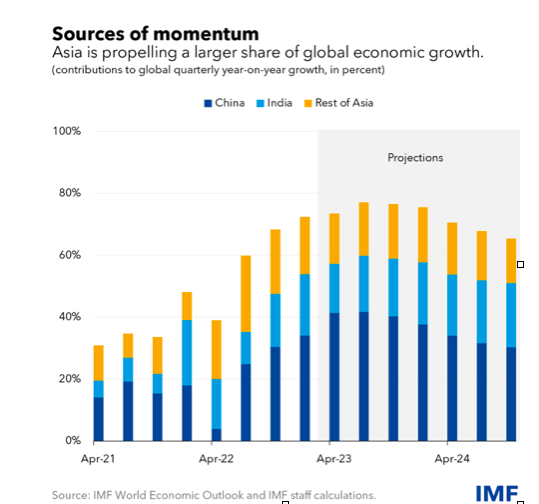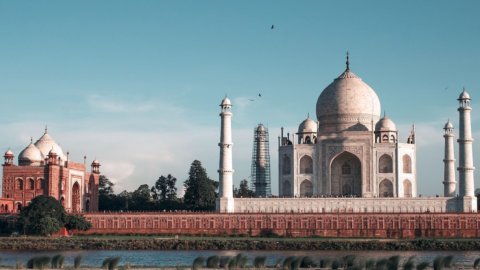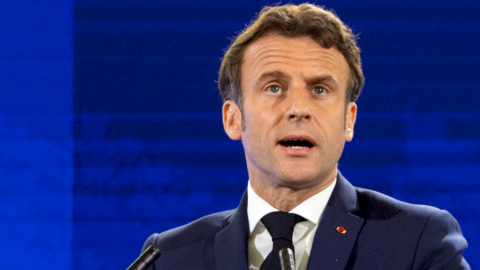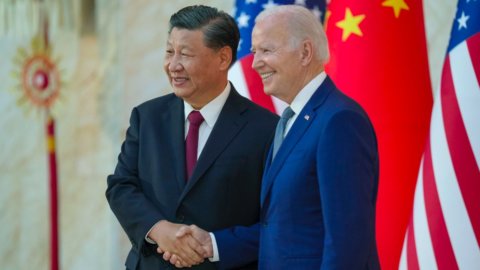There is no doubt that Asia will lead the world economic growth in the next years. The International Monetary Fund it expects the region's emerging and developing economies to grow 5,3% in 2023, with China and India alone contributing more than half of global growth this year.
Il service sector plays a fundamental role for the entire Asian area and the global production and supply chains show that they have overcome the critical issues related to the pandemic, also thanks to the substantial reconfigurations they have undergone.

India will drive the growth
If the numbers reveal a broad-based growth in Asia, it is without a doubt India to attract the attention of analysts and entrepreneurs, both for the peculiar dynamics of internal innovation and for the international geo-political context. Apple's recent decision to move $7 billion worth of iPhone production from China to India is a clear sign.
Some simple data help to understand why it is more and more New Delhi to arouse the interest of international investors who, in 2023, thanks to the Indian presidency of the G20, can observe the diplomatic and organizational skills, as well as testing the quality of its innovations.
The country, which is already the fifth largest economy in the world, with a GDP in 2022 equal to 2.995 billion euros, will become the third largest economy on the planet by 2027, coming to surpass Japan and Germany.
All of this is not surprising when you consider that India has one among the most important GDP growths in the world: a average rate of 5,5% over the last decade and 8,9% between April 2021 and March 2022 (the last fiscal year for which definitive data are available), with a forecast by the National Statistical Office close to 7% for the fiscal year '22-'23.
Projections of the International Monetary Fund published last January estimate a India's GDP growth of 6.1% in 2023 and 6,8% in 2024.
Demography and innovations are India's strengths
Certainly, part of its current strength comes from population: approx 1 billion and 400 million inhabitants, of which more than half are now under 30 and only 6,7% are over 65, according to data from Index Mundi.
Il “demographic dividend”, which indicates a combination of a declining fertility rate and a growing working-age population, will favor the country until 2055, making it particularly attractive both for its ability to fuel economic growth and for building an increasingly wider.
Demographics but not only: India shows itself at frontier of innovation in many areas. From services with high added value toe-commerce and digital payments developed by numerous successful start-ups. Just think that in September 2022 they were 107 the Indian "unicorns"., worth $340,7 billion. Among the best known: Ola (in the mobility sector), Paytm (for online payments), Flipkart, Shopclues and Bigbasket (in online sales), Zomato (for home deliveries), OYO (for hospitality).
The very advanced digitization of India has represented an unprecedented boost to its economic and financial transformation. In particular, access to the internet has produced profound changes in the daily lives of people and businesses and the country, thanks to a very young population, can count on over a billion potential users of digital services.
The reduction of costs and the progress of the network infrastructures, in particular those of mobile telephony, have allowed the progressive financial inclusion of individuals who live in areas poorly connected with large urban centres. According to the Ministry of Electronics and Information Technology, in 2025 the impact of the digital economy on GDP Indian will reach 18-23% (it was 8% in 2018). The government program Digital India it has provided a large segment of the population with a digital identity, a bank account and access to online payment systems. In this framework, new payment methods and tools have been launched such as the Unified Payments Interface (UPI), as well as electronic wallets and financial applications for mobile phones, allowing the diffusion of digital finance even in rural and more remote areas of the country. UPI is a real-time payment system developed by the National Payments Corporation of India to facilitate banking transactions, both between individuals and businesses, through the use of mobile phones, opened to public use in 2016. The The Indian government aims to spread it internationally, having included it among the best practices to be exported also on the G20 agenda.
The data, also in this case, are very significant: the volume of digital financial transactions in India it has grown at an average annual rate of about 50% over the past five years. At the same time, the use of UPI, now essential for individuals and companies, increased by about 160% per year.
The fragility of a growing country
There are obviously some fragilities of a vast country that has not yet been modernized in various areas. The unemployment rate it is quite high, in the post pandemic: rising to 7,45% in February 2023 from 7,14% in January 2023, bringing the total number of unemployed in the country to 33 million.
There remain inequalities important among different social classes and areas of the country in terms of access to basic services, education, per capita income. The richest 10% and 1% of the population hold respectively 57% and 22% of the national income, while the poorest 50% hold less than 13% (with a per capita income of 2.000 euro PPP).
Administrative Procedures sometimes particularly complex e still inadequate infrastructure and logistics (especially in some areas of the country), place India in 63rd place in the classification of the Word Bank "Ease of doing business".
To all this, the Government is trying to remedy with ambitious plans and huge resources. Manufacturing development, for example, is strongly promoted, also to qualify internal productions and make them more competitive on international markets. Among the first measures of the Modi era was the launch of the program on 25 September 2014 Make in India, to create and encourage companies to develop, manufacture and assemble products in India and to incentivize foreign investment in production. Most recently, under the program Samarth Udyog, the Ministry of Heavy Industry and Public Enterprises has created five public-private centers of expertise, with the aim of promoting the digitization of small and medium-sized enterprises and increasing the competitiveness of Indian manufacturing, with a view to industry 4.0 .
Global investors increasingly interested in India
Undoubtedly, global investors are showing more and more interest in the country, considering the opportunities that present themselves in various sectors, including that of the energy transition (which in 2021 attracted the largest number of international projects) or services with a high digitization and high rate of innovation (including research and development).
According to the latest global investment report from theUNCTAD, India in 2021 was the seventh country in the world for investment flows foreign direct, with 45 billion dollars. Despite a 26% drop from the previous year, they were announced in India 108 new projects with international funding, compared to the average of 20 per year over the last 10 years. The largest number of initiatives, 23, concerns the renewable energy sector and, among the largest, there are the construction of a steel and cement plant for 13,5 billion dollars and a new car manufacturing plant for 2,4, XNUMX billion dollars. Particularly important is the data on greenfield investments in research and development: While these are concentrated in advanced economies, with Canada, the United Kingdom and Spain among the main recipients, India attracts almost half of those to developing countries.
On the front of the international trading, India is a relatively closed economy, with a world export market share of 3,1% in 2022. However, the country has concluded free trade agreements with the UAE and Australia, pending finalization of those with Great Britain and Canada. Extensive negotiations are also underway with the European Union to regulate an area of great interest, considering that Europe is India's third largest trading partner, after the United States and China, and the second destination for Indian exports after the USA.
In the frame of the Europe-India relations, an ideal point of reference for acting towards and with such a vast and complex country as India, then bilateral relations with Italy are introduced.
The meeting between Premier Meloni and Prime Minister Modi
The meeting between the Prime Minister of India Narendra Modi and the President of the Council Giorgia Meloni, which took place during the official visit of the latter to New Delhi on 2 March 2023, was an opportunity to ratify the elevation of bilateral relations between the two countries at the level of Strategic partnership.
This is the natural outcome of a process started years ago, which took an initial shape with the Action Plan 2020-2024 for a strengthened partnership, which identified the pillars for expanding cooperation between the two countries, including industrial cooperation. At the end of 2021, the launch of the Strategic partnership in the Energy Transition sector, on the occasion of the meeting between Premier Modi and Prime Minister Draghi on the sidelines of the G20 meeting in Rome.
Italy has also joined the main ones international initiatives led by India, including the Indian Ocean Rim Association (IORA), the International Solar Alliance and the Coalition for Disaster Resilient Infrastructure (CDRI).
The Partnership with India has become particularly broad including the fight against extremism, counter terrorism, cooperation in the fields of economy, culture, tourism, trade and investment, collaboration in science, technology and education, space cooperation, cyber security.
The 700 Italian companies investing in India
Currently, they are approx 700 Italian companies investing in India, of which more than 300 have manufacturing plants, with an estimated employment of around 50.000 units. In addition to the big names in Italian entrepreneurship, present all over the world, there are also companies less known to the general public but which have found in India a suitable dimension to grow.
On the trade front, there are many opportunities to be seized, also because it is estimated that already today there is a pool - growing - of more than 100 million consumers potentially ready for Italian goods. At the moment (data for January 2023), Italy is the 25th supplier country for India and the 14th destination market for Indian exports and for years now has been India's third/fourth trading partner among European countries. The main goods of our export are: machinery, chemical substances and products, base metals and metal products, means of transport, rubber and plastic items. Trade has reached record levels, doubling in almost two years. In 2022, it was 14,9 billion euros, with a growth of 42% compared to 2021, which had already recorded a record 10,5 billion euros, well above pre-covid levels. The Italian imports from India, equal to 10,1 billion euros, represent the main component of the bilateral trade flow, with a percentage change of +52,4% compared to the previous year. Exports to India are also growing (4,8 billion euros), with a +24,2% compared to 2021. Finally, there has been an increase in productive investment in both directions, testifying to a strong complementarity between the Italian and Indian economies.
In the near future, new spaces and opportunities will open up for Italian companies in India, both for the larger and more structured ones and for small and medium-sized enterprises, whose great innovative capacity is also recognized on the Indian side. Energy transition, connectivity, sustainable mobility, defense and advanced manufacturing appear to be the most promising areas. The Italian System in India - Embassy, Consulates, ITA-Agency, Sace, Simest, Italian-Indian Chamber of Commerce - is ready to support this process.
°°° Francesca Spigarelli is full professor of Applied Economics at the University of Macerata
°°° Francesco Varriale is Head of the Economy and Innovation Office of the Italian Embassy in Delhi





